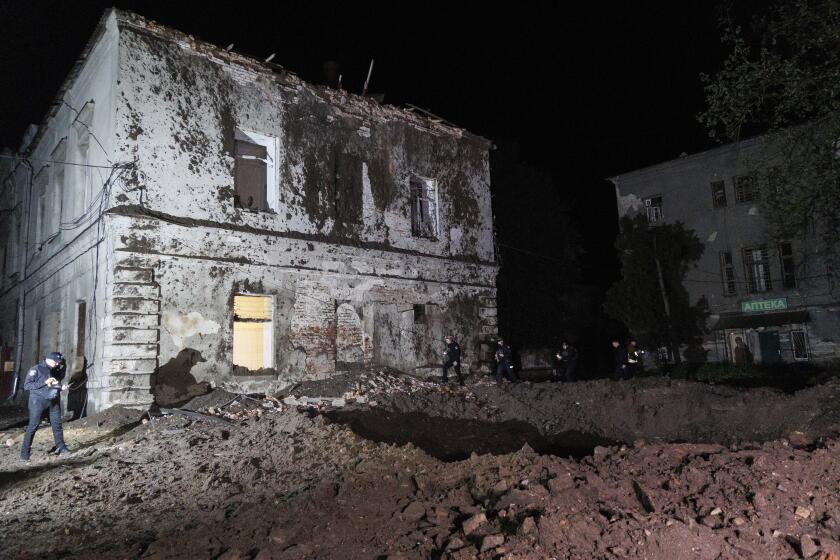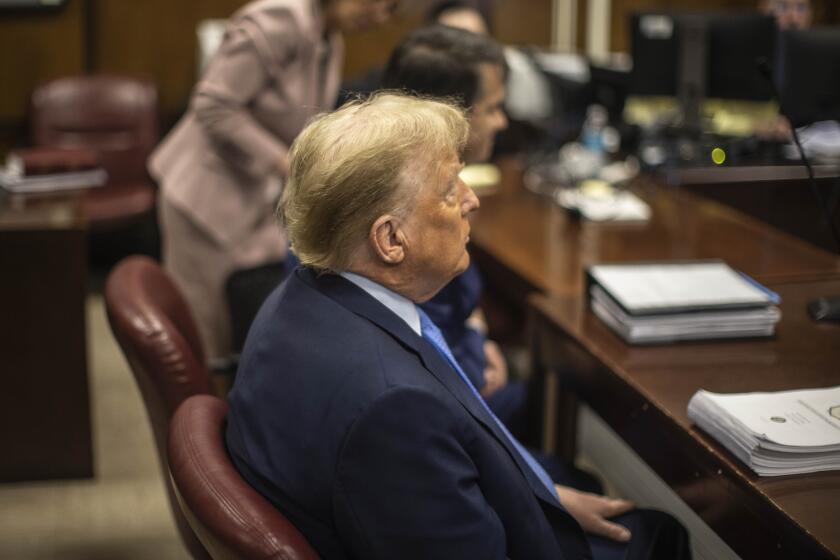White Hose unveils plan to fight border drug cartels
The Obama administration said Tuesday it is speeding hundreds of federal agents and intelligence analysts to the Mexican border, along with specialized technology, as part of an ambitious new plan to attack the powerful drug cartels and prevent violence from spilling into the United States.
The initiative represents the most determined U.S. effort in years to counter the powerful and dangerous cartels and assist Mexican President Felipe Calderon in a battle that has already claimed more than 7,000 lives in Mexico over the last 15 months.
The administration will spend $700 million this year and more in the future on a wide variety of bilateral security programs, including improving cross-border interdiction efforts, upgrading intelligence-gathering methods and establishing corruption-resistant police agencies and courts.
The White House also pledged to redouble its efforts to diminish the demand for illegal drugs in the United States and staunch the flow of weapons and laundered money into Mexico, two issues that have prompted criticism that Washington wasn’t doing its part in the fight.
To lend urgency to the plan, the administration is requiring that an array of federal agencies work together as well as with state and local counterparts and with agencies in Mexico.
“This issue requires immediate action,” said Homeland Security Secretary Janet Napolitano. “We are guided by two very clear objectives. First, we are going to do everything we can to prevent the violence in Mexico from spilling over across the border. And second, we will do all in our power to help President Calderon crack down on these drug cartels in Mexico.”
Despite its scale, the Obama administration plan was seen by many in Mexico and by state officials in California and Texas as inadequate to the scope of the crisis. The administration is relying heavily on existing funds and personnel redeployments where critics say new money and manpower are needed. “We believe it is a positive move in the right direction and it demonstrates that President Obama is seized with how important the bilateral relationship is with Mexico and in ensuring that security prevails at the border,” said Ricardo Alday, spokesman for the Mexican Embassy in Washington.
However, the Calderon government does not believe the plan provides enough resources, especially to combat U.S.-based weapons trafficking and money laundering, according to one Mexican official, who spoke on condition of anonymity because he was not authorized to discuss the matter.
But the official said the White House has assured Mexico that the plan announced Tuesday is only the first step. “We really think that there is more coming up in the near future,” the official said.
“If the steps we’ve taken do not get the job done, we will do more,” President Obama said at a news conference on Tuesday.
Many, if not most, of the programs unveiled Tuesday will be financed through existing funds, much of it under the multiyear, $1.4-billion Merida Initiative established by the Bush administration.
Even so, some border security experts said the plan was impressive in what it sets out to accomplish.
Demetrious Papademetriou, president of the nonpartisan Migration Policy Institute in Washington, praised the emphasis on collaboration between federal, state and local authorities. He said it was an encouraging sign that Napolitano, a former Arizona governor and federal prosecutor, was bringing both her expertise and her frustrations to the Washington policy debate.
“What you always heard at the border was that the administration in Washington was going it alone,” said Papademetriou, a frequent participant in U.S.-Mexico security study groups. “This appears to be a carefully calibrated response that certainly has enough in the mix for people to think that the government is paying attention to this issue and is on top of it.”
Some top officials in border states, however, said the plan stops short of meeting their requests for more “boots on the ground.”.
Texas Gov. Rick Perry, for instance, recently asked Obama to send 1,000 National Guard troops to the border, as well as five technologically advanced helicopters to help identify and track cartel operatives as they cross the vast border under cover of darkness. Napolitano said she plans to discuss the issue with Perry during a visit to Texas on Thursday.
But even if the National Guard is deployed, more resources will be needed to help overwhelmed local, state and federal authorities already working at the border, said Texas Homeland Security Director Steven McCraw.
“Make no mistake about it, if you want to secure the border you have to put sufficient patrol resources on the ground,” McCraw said in an interview. “Investigations and prosecutions are important, but we’d rather have them not penetrate the U.S.-Mexican border in the first place.”
California Gov. Arnold Schwarzenegger hailed the plan as “a great first step.” But he added: “I will continue to fight for more federal resources at our border.”
The National Guard already has been deployed at least three times to the border, mostly to provide logistical support to law enforcement.
The border plan will draw about $40 million from federal economic stimulus money and will be used to send 360 Homeland Security officers and agents, 100 of the Treasury Department’s Alcohol, Tobacco, Firearms and Explosives agents, and officers from the Drug Enforcement Administration and FBI. The FBI will establish a Southwest Intelligence Group, a clearinghouse of FBI activities involving Mexico.
Because the effort will have so many facets, it will be coordinated at the White House through the National Security and Homeland Security councils as part of the broader U.S.-Mexico portfolio, administration officials said.
Obama’s plan has been in the works since before he took office, and reflects growing U.S. concern -- and even alarm -- over the increasingly powerful cartels.
In a sign of its importance, the plan was announced at the White House by Napolitano, Deputy Atty. Gen. David Ogden and Deputy Secretary of State James Steinberg.
Secretary of State Hillary Rodham Clinton leaves today on a trip to Mexico. Napolitano and Atty. Gen. Eric H. Holder Jr., along with Obama, are scheduled to travel there soon.
Rep. Lamar Smith (R- Texas), the ranking Republican on the Judiciary Committee, said he supports the administration’s efforts to address border violence, but expressed concern about the specifics of the plan.
“I am concerned that the redeployment may come at the expense of other critical law enforcement activities,” Smith said. “With hundreds of federal law enforcement officers being relocated to the border, we must ensure that we do not undercut our national security and immigration enforcement responsibilities.”
Officials said that in many cases, the plan will entail moving small teams of people while using other ways of beefing up numbers, including delaying transfers.
“We are not pulling people off of critical missions such as the northern border. We are suspending other small-scale stuff,” said one Homeland Security official who spoke on condition of anonymity because he was not authorized to speak publicly. “We are focusing our priorities.”
--
Times staff writer Ken Ellingwood in Mexico City contributed to this report.
More to Read
Start your day right
Sign up for Essential California for news, features and recommendations from the L.A. Times and beyond in your inbox six days a week.
You may occasionally receive promotional content from the Los Angeles Times.






